
10 Neighborhoods Where Everything Is Changing
Over the past decade, Sarasota has seen an influx of tourists who have become residents, raising demand for more housing, infrastructure and services and pushing construction and development to the forefront of Sarasota life. From new roundabouts and a downtown condo boom to expansive sprawl and new McMansions, Sarasota’s profile is in flux, as what was not so long ago a small beach town becomes a true city. Here are 10 neighborhoods where the effect of all that growth and change is most evident.
Parrish
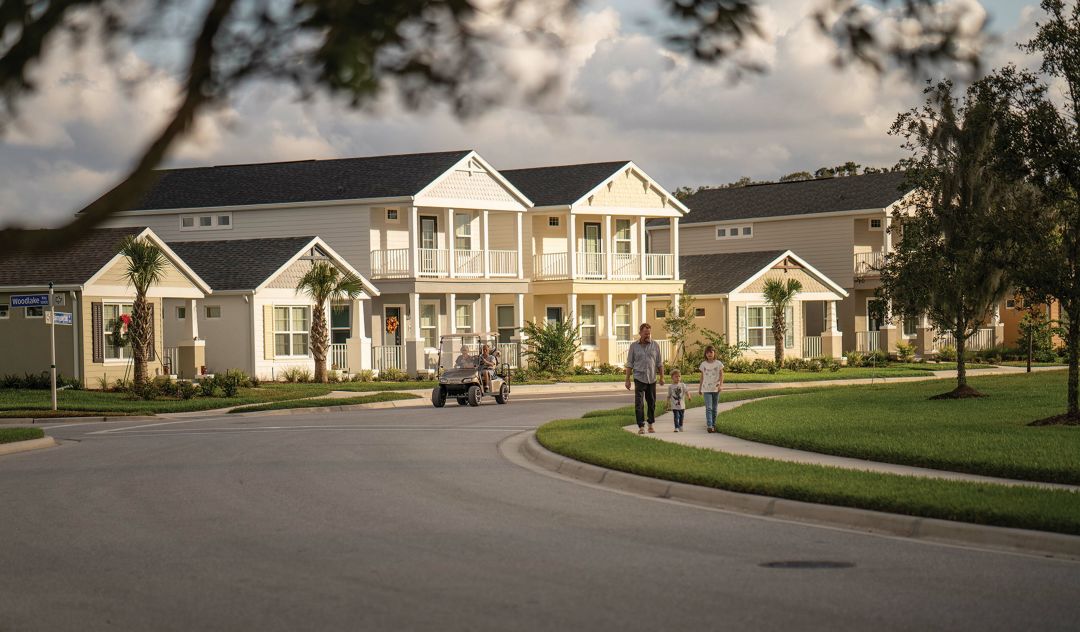
Former pastureland is now a gated community called Silverleaf in Parrish.
Image: Chris Lake
Instead of being in the middle of nowhere, Parrish, north of Ellenton and east of Interstate 75, is now in the middle of everything. Downtown Bradenton is 11 miles away, downtown St. Pete is 21 and downtown Sarasota is 26. Even Tampa, at 34 miles, makes for an acceptable commute. Lots of people, many of them families, are moving here, and businesses and services are following.
“What attracted us 12 years ago was it was the most affordable area in Manatee County and you could build a house for under $200,000,” says 35-year-old Ashley Ebeling, a mother of three who works in Bradenton. Now approved for 6,500 residences, the master-planned community North River Ranch has starting prices that range from $300,000 to $800,000 for homes between 1,500 and 3,500 square feet. It will also have a Publix-anchored shopping center. Due to all the new construction and sprawl, Ebeling says some residents feel like Parrish is becoming “a northern extension of Lakewood Ranch.”
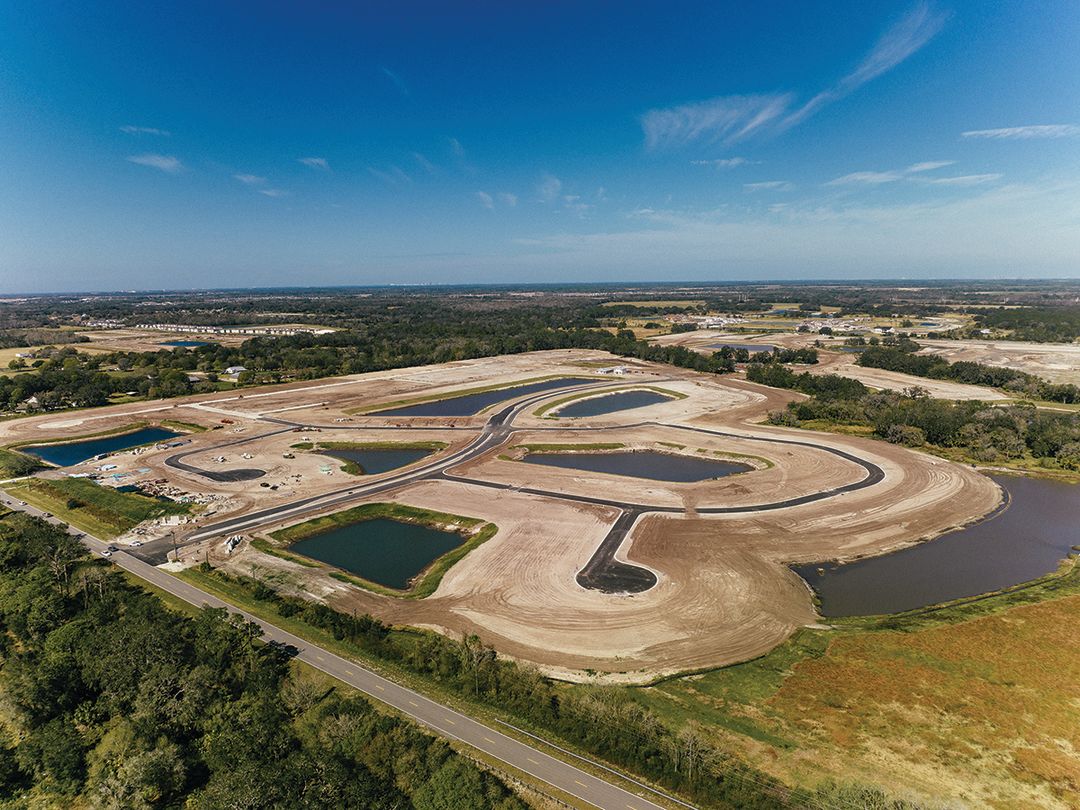
Agricultural lands are fast being sold and prepped for new residential developments, like this one off Fort Hamer Road, as demand for housing grows.
Image: Everett Dennison
Manatee County commissioners approved several major development projects in Parrish that cleared the path for the construction of a new six-story hospital, and a new retail plaza called Creekside Commons is headed to U.S. 301 near Erie Road, where tenants will include Aldi, HomeGoods and Lowe’s. There’s also a new shopping center called Fort Hamer Crossing that will be built on the southwest corner of Fort Hamer Road and U.S. 301, a new State College of Florida campus, a new middle school and major road widening projects to facilitate all the added traffic.
Big-name builders like Neal Communities, which is spearheading North River Ranch, are putting a stake in once-sleepy Parrish. Overall, more than 23,000 new homes are headed there. Even with all that new housing stock, it’s not as affordable, or spacious, as it once was.
Cortez
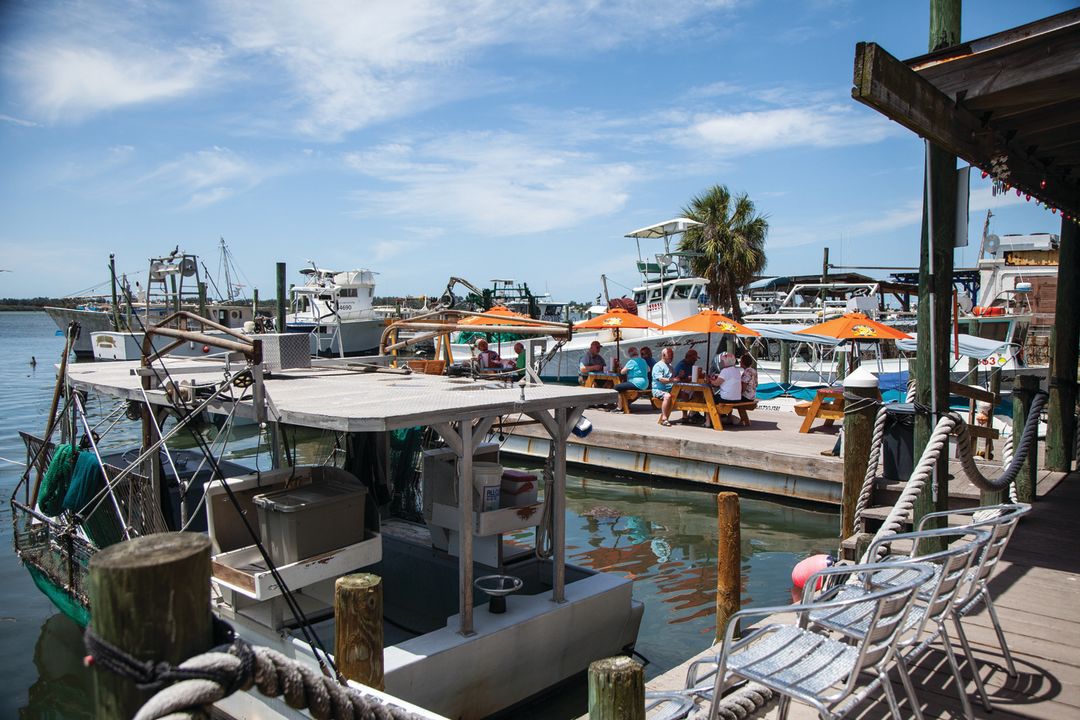
The Star Fish Co. restaurant and market remains a Cortez mainstay, and nearby streets exude Old Florida charm.
Image: Staff
This small fishing village in Manatee County juts out into Palma Sola and Sarasota bays and is only about five square miles in all. It was mostly settled in the late 1880s and ’90s and is one of the last working fishing villages on the Gulf coast. It’s known for its natural Old Florida charm, thanks to its colorful centuries-old cottages and laid-back vibe.
But, these days, the economy depends less on fishing than on the tourists who flock to the seafood restaurants on the waterfront, and some of the cottages have been turned into vacation rentals while some big new homes have risen in the village in recent years. And that’s not the only change hitting the community.
Hunters Point, a new development in the works on Cortez Road West, will include 86 three-story, net-zero-energy, solar-powered townhomes; 47 private docks along a canal; a public marina; and a community center. Some homes have already sold and prices for remaining homes start at just under $1.5 and go up to almost $2 million. The development sits along privately owned Hunters Point Canal, which provides direct access to the Intracoastal Waterway. For now, an unresolved lawsuit between several canal-side homeowners, the developer and two RV resorts with access to the Intracoastal rages on.
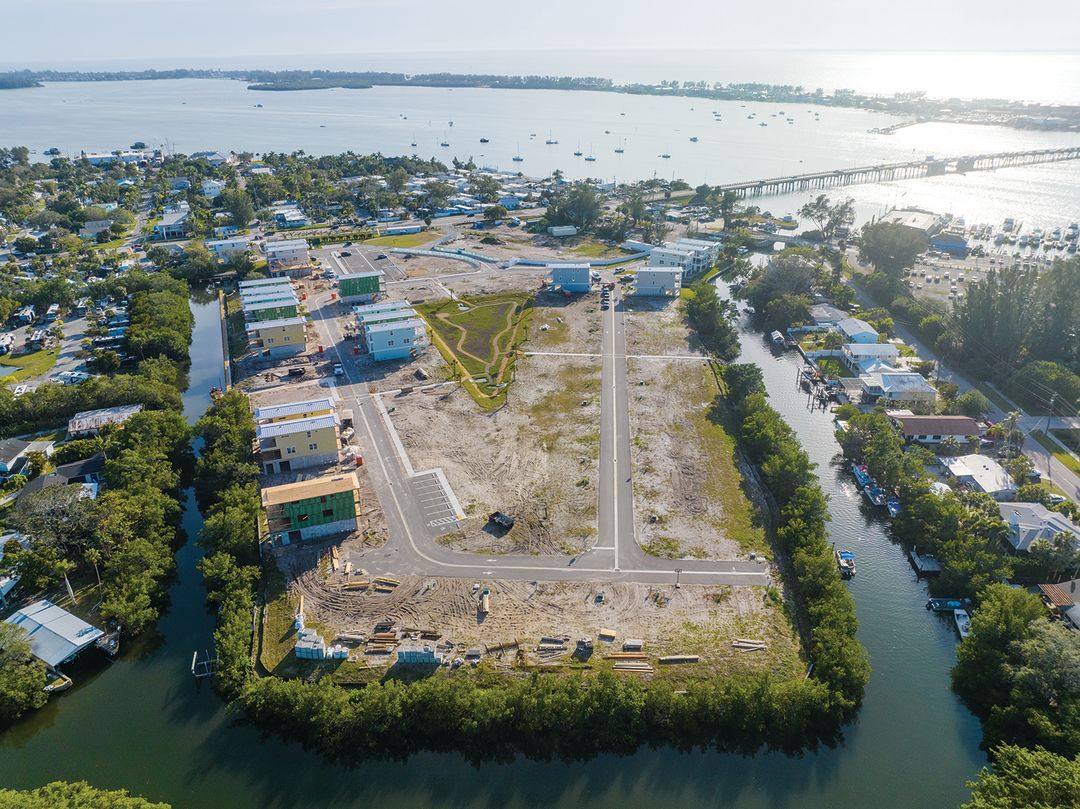
Hunters Point spans 18.7 acres and is surrounded on three sides by a canal that connects to the
Intracoastal Waterway.
Image: Everett Dennison
Construction of a new bridge that will connect Cortez to Anna Maria Island is also a hot topic for residents. Work on the fixed-span $6.7 million Cortez Bridge is slated to begin in 2026. Replacing an aging drawbridge that provides just 17 feet of vertical clearance when down, the new bridge will provide 65 feet of clearance for vessels passing under it, meaning no more waiting in the car while the drawbridge goes up and down.
Cases like Hunters Point highlight why it’s a good thing locals made moves to prevent similar developments from spreading to more waterfront land. In 1991, the Cortez Village Historical Society and the Organized Fishermen of Florida combined forces as the Florida Institute for Saltwater Heritage to spearhead the purchase of 100 acres along Sarasota Bay. The result: The F.I.S.H. Preserve, situated in a fisheries habitat Cortez locals had always called “the kitchen.” Proceeds from the annual Cortez Commercial Fishing Festival benefit the preserve, which will eventually include a system of kayaking and walking trails.
The Bayfront
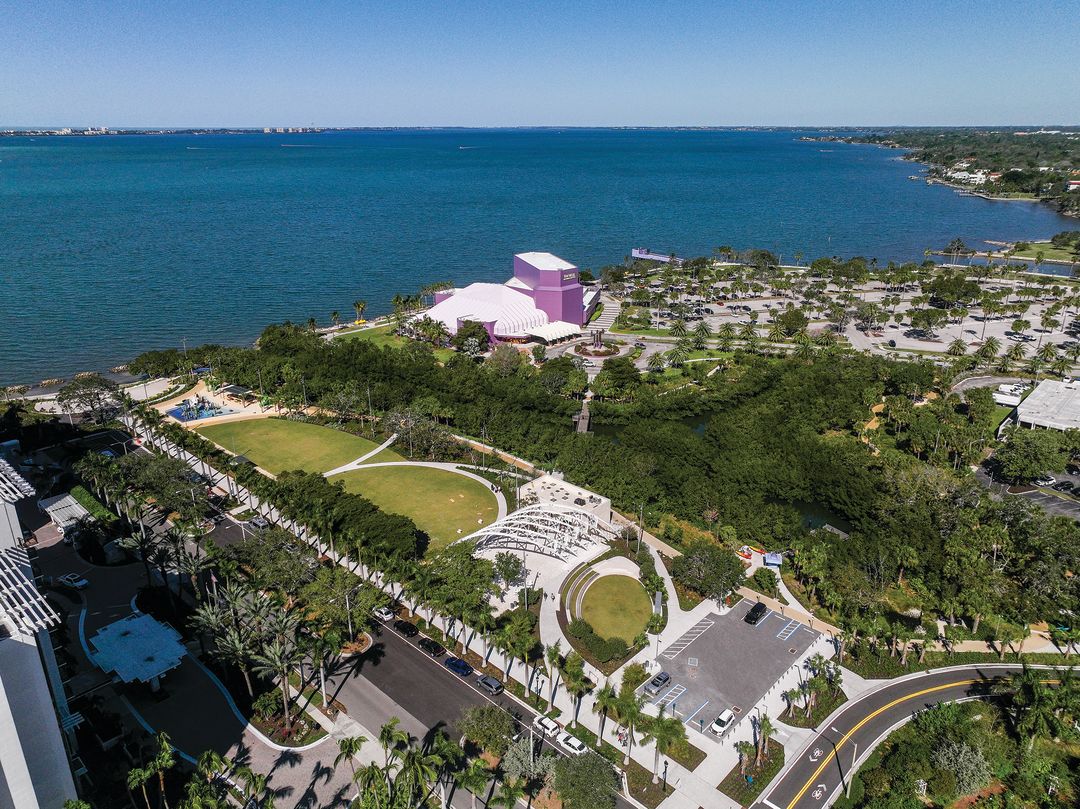
The Bay includes more than 14 acres of green space, a playground, a mangrove bayou walkway and a kayak launch, with more to come.
Image: Everett Dennison
Just like that, free water views are disappearing for many locals as a high-rise condo boom has hit the bayfront. Current plans allow for 18-story buildings in this area, and the space between N. Gulfstream Avenue and Boulevard of the Arts is buzzing with vertical construction as luxury condominium towers like One Park, Bayso (sold out before completion) and The Ritz-Carlton Residences sprout concrete and glass.
Before the bayfront condo boom, the Great Recession left the area that used to be home to the Quay vacant. Now, what’s called Quay Sarasota is taking shape. Located on a large piece of waterfront that few Florida downtowns can offer, the property is next door to The Bay, 53 acres of city-owned land being developed as a public park and cultural site. Quay Sarasota’s 14 acres will eventually include 695 residences and 175 hotel rooms, as well as office, shopping and dining space, a yacht basin, a park and a waterfront walkway. While most of us can’t afford the $1 million-plus condo price tags, parts of the project will be open to the public, and we’ll soon be able to shop and dine there.
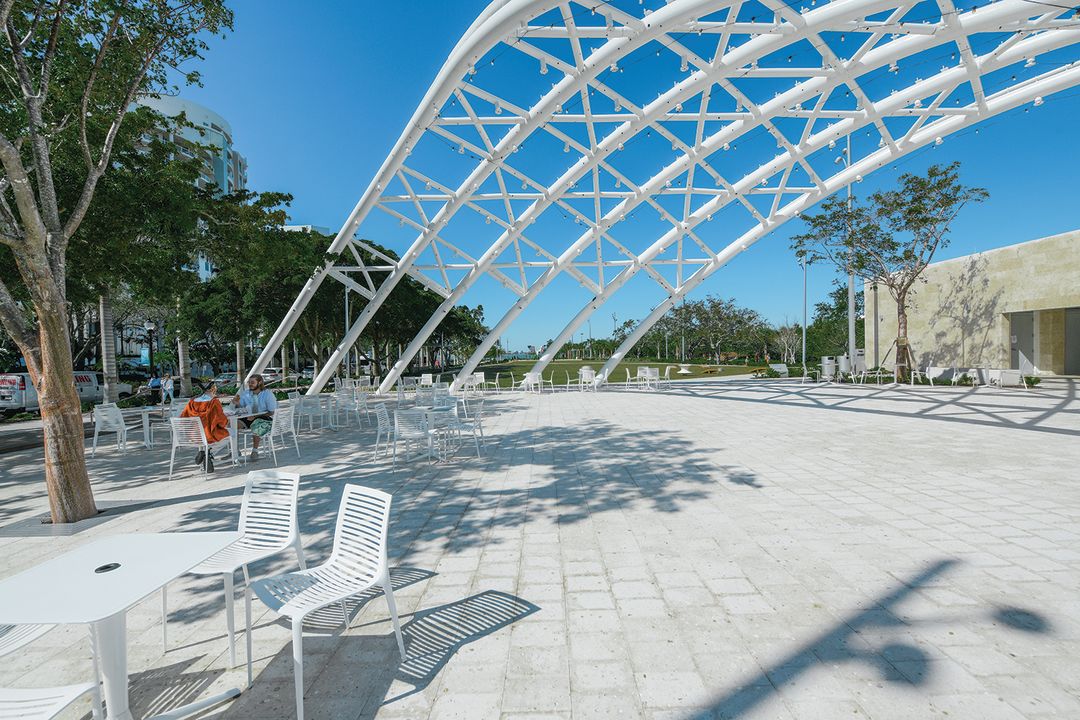
The Bay sits on 53 acres of city-owned land being developed as a public park and cultural site.
Image: Everett Dennison
One slice of history that remains the same amid the high-rise bustle? The now-vacant, nearly century-old Mediterranean Revival Belle Haven Apartments. Thanks to a historic designation that keeps it safe from the wrecking ball, it sits humble yet distinguished among the skyscrapers as a reminder of what used to be considered luxury living in the 1920s. Interested? It’s on the market for $12.5 million.
North of Downtown
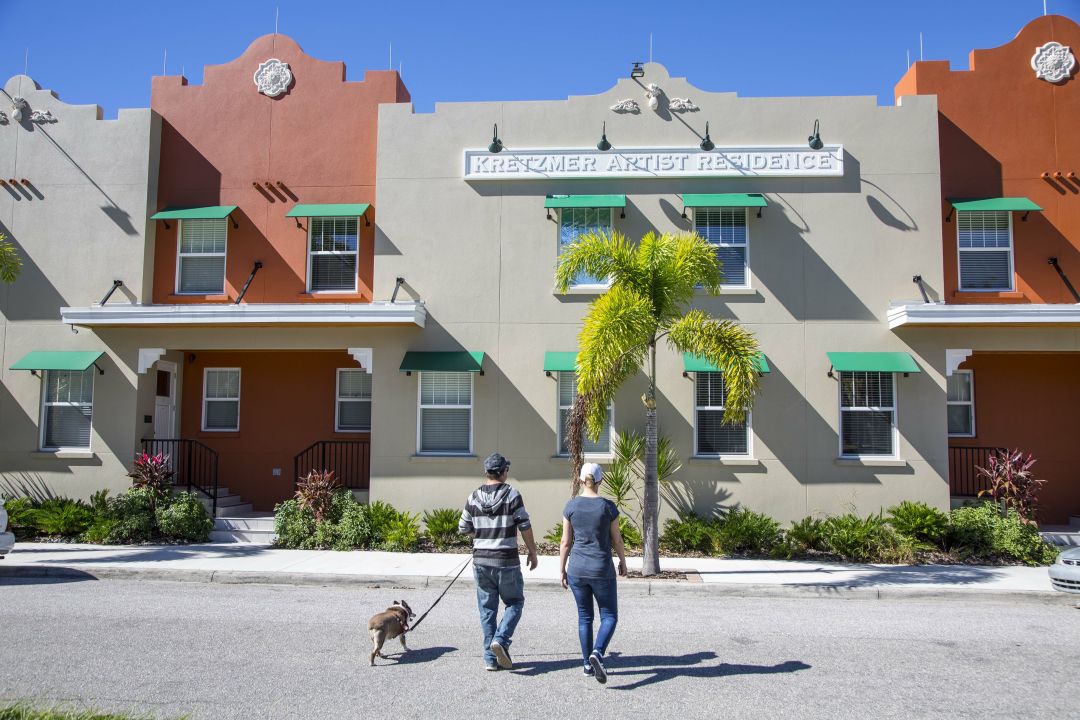
New condo and apartment buildings dominate in the Rosemary District.
Image: Everett Dennison
As the lines of downtown Sarasota spill over their previous boundaries in a rush of development, the adjacent neighborhoods of Central Cocoanut, the Rosemary District and Gillespie Park, all just north of downtown, are now really just... downtown. All, save for Central Cocoanut, are historically Black neighborhoods (Rosemary District used to be called Overtown when it was established in 1885 as Sarasota’s first Black community), but all have changed with gentrification, displacing many original residents.
Thanks to an overlay district OK’d by the City of Sarasota, spurts of redevelopment that began in the 1990s in the Rosemary District have turned into a steady flow, as demand for properties within walking distance of Main Street has risen. The area is now home to posh architect offices, a few high-end retailers, yoga studios and cafés, plus the creative young people who frequent them. Several murals have turned a walk there into a visual candy land.
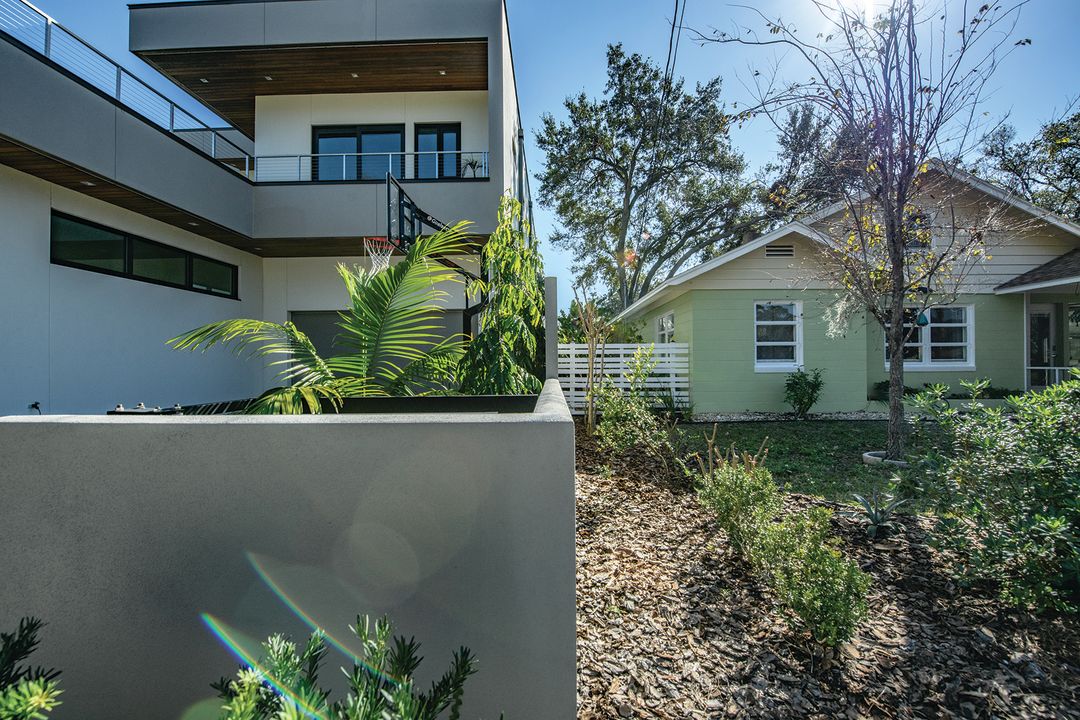
New two-story homes live in harmony with older homes in Gillespie Park
Image: Everett Dennison
Named after Sarasota’s first mayor, Gillespie Park, just to the east of the Rosemary District, is more residential, even though some of the homes are zoned to combine “work-live” spaces, like Lorrie Dickinson’s Raine Studio, a funky jewelry store. Despite the loss of some of the old wood-frame cottages, the number of new modern homes is still less than the number of their original, quaint counterparts.
Still, prices are way up: A single empty lot fetched $446,500 last year.
North of the Rosemary District, historic Central Cocoanut has undergone less visible change, even while its proximity to downtown and the bayfront makes it a great location and vulnerable to gentrification. It’s home to a mix of renters, young families, longtime residents and a few vacation rentals. It’s a hub of anti-HOA living, where a laughing Buddha sculpture in one front yard counts as a neighborhood icon and random yard art by neighborhood artist John Dehn adds whimsy. Within this walkable, urban oasis, residents are a tight bunch, and they recently banded together to counter plans for a proposed carwash that they say would ruin the character of the community.
Arlington Park
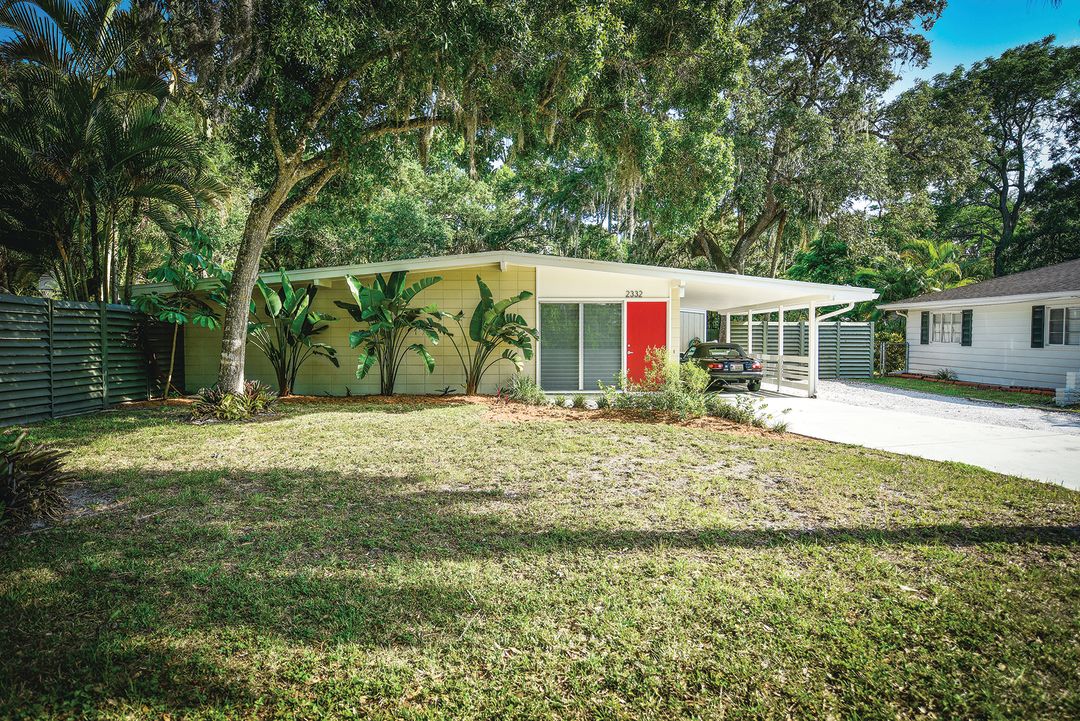
Arlington Park boasts a mix of those who bought their homes decades ago for roughly $200,000 or less and newcomers whose new, often two-story homes cost upwards of $800,000
Image: Everett Dennison
In the mid-1980s, Arlington Park, just south of downtown Sarasota, was kind of shabby and many of the vintage homes there, although cute, was unkempt. Then real estate’s law of location took over. As traffic in ever-growing Sarasota became more intense, Arlington Park’s five-minute commute to downtown made it ideal for families and retirees. From the northern edge, you can walk to Main Street, and Sarasota Memorial Hospital, one of the area’s largest employers, is right across the street.
But with that change has come those with means who eschew the older, unpretentious wood-frame cottages for the oversized and modern sugar cube aesthetic. Now the neighborhood boasts a mix of those who bought their homes decades ago for roughly $200,000 or less and newcomers whose new, often two-story homes cost upwards of $800,000. It’s tough to walk through the neighborhood’s side streets these days without seeing multiple empty lots prepped for cement block construction slated to eat up every last square foot it can.
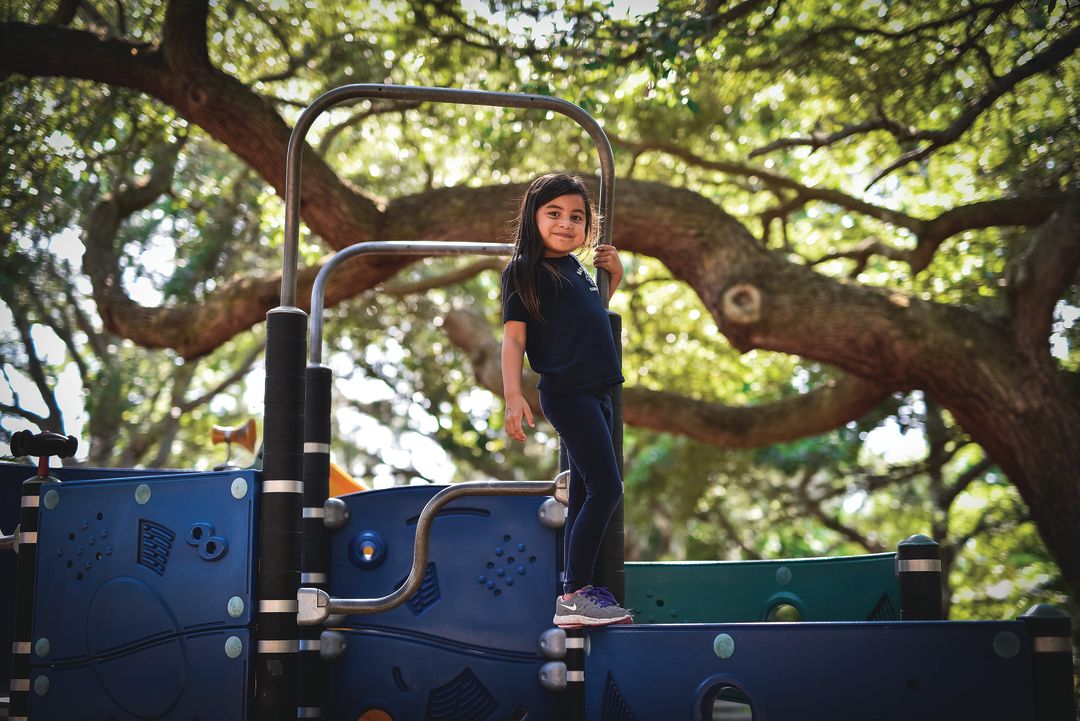
Despite lots of new construction, Arlington Park is loaded with charm thanks to oak trees, walkable streets and a pretty, accessible public park.
Image: Everett Dennison
All that action is changing the character of the neighborhood, which now walks a tightrope between quaint and chic. But what really has the neighborhood association there in a tizzy is a recent zoning and density change that was approved for the corner of Bahia Vista Street and Tuttle Avenue, where the developer has proposed to build a 250-unit apartment building, in which 35 will be priced at “attainable housing” rates.
For many, that’s an attractive proposition, given Sarasota’s affordable housing crisis, but while the project will be located on the main, busier, outer streets of the neighborhood, some residents feel it’s incompatible with Arlington Park and are worried that all that extra traffic and parking will spill into its oak-lined residential streets, threatening pedestrian safety.
Lakewood Ranch
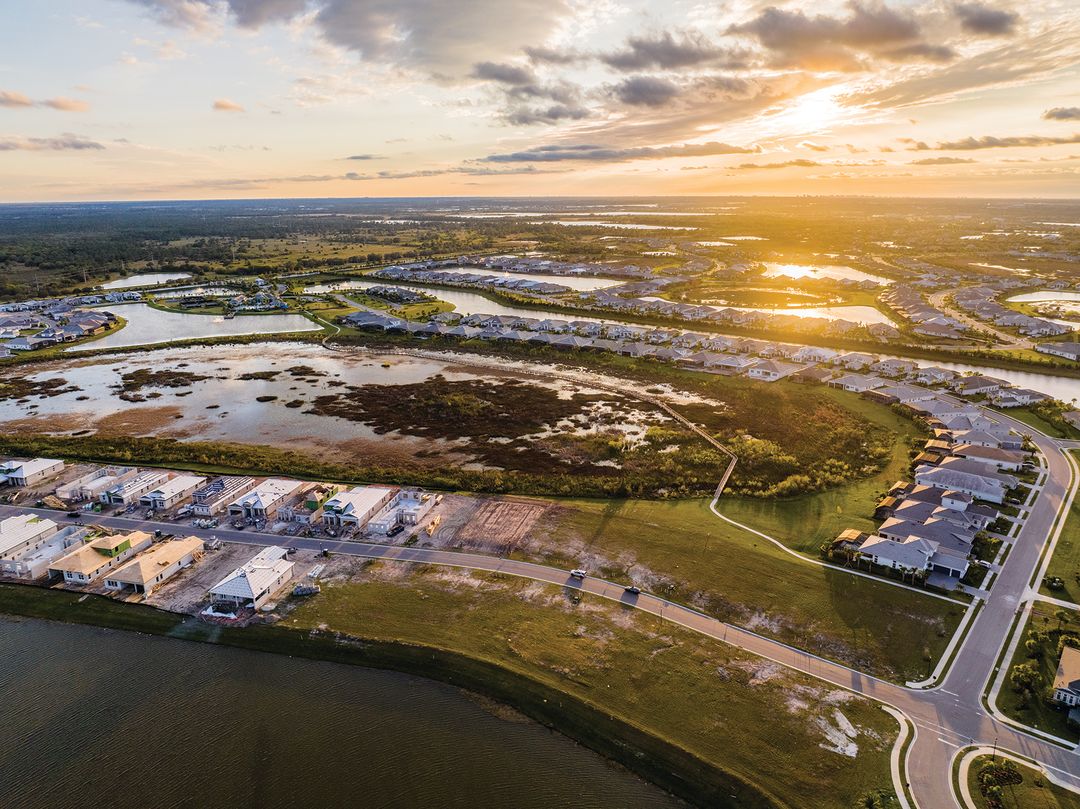
Lakewood Ranch’s consistent growth and national recognition make it the grand-daddy of master-planned communities.
Image: Everett Dennison
When Lakewood Ranch’s first model homes rose from the vast, empty cow pastures of east Manatee and Sarasota counties in 1995, those closer to downtown’s attractions and beaches wondered why anyone would want to live so far away. Today, “The Ranch” is its own 33,000-acre metropolis, defying that early skepticism and then some.
Since its inception, Lakewood Ranch has ranked among the top best-selling master-planned communities in the country and is still growing far and fast, with several “villages” to come. Its residents have come from all over the compass, drawn by the look, the location and the lifestyle of a carefully planned, homogeneous hometown.
Today, Lakewood Ranch includes roughly 26,000 residences in 26 “villages” made up of everything from apartments to golf-course-view executive mansions. It is also home to 500-plus thriving businesses, with mom-and-pop pizzerias and major corporate headquarters alike; lots of educational opportunities and medical facilities, from a hospital to LECOM, one of the country’s largest schools of dentistry; and a huge range of recreational amenities, like 11 community parks and 150 miles of trails. Single-family homes there range from $350,000 to $4 million and beyond, depending on customization.
All that growth hasn’t come without pushback from existing residents, who moved there when things were roomier. Increased density recently approved by the Sarasota County Commission will allow 5,000 more homes on 4,120 acres between University Parkway and Fruitville Road as part of a development called Lakewood Ranch Southeast. Some longtime area residents are fighting back, but it’s unlikely their pleas will slow the demand for more housing and development that has spurred the area’s popularity and growth.
Siesta Key
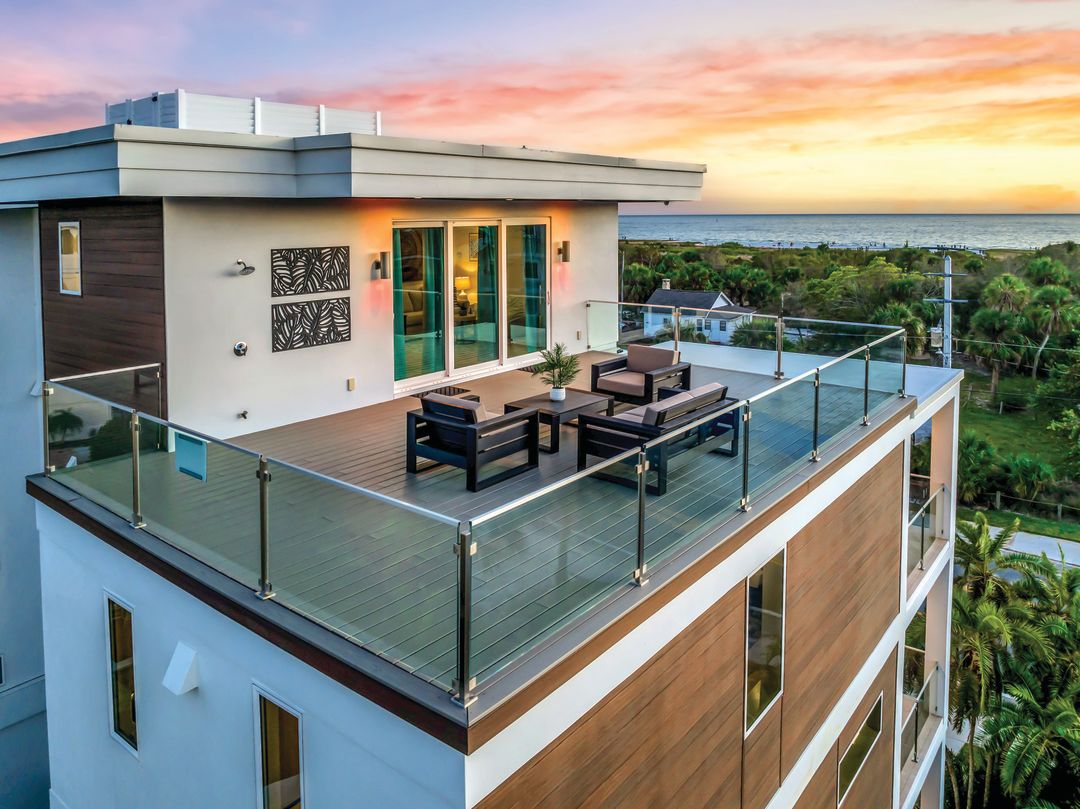
It’s all about vacation vibes on Siesta Key, where flip-flops and sunsets inspire a laid-back lifestyle.
Image: Everett Dennison
The star of Sarasota beaches, Siesta Beach has been named the Best Beach in America multiple times by TripAdvisor and “Dr. Beach,” aka Stephen Leatherman. Indeed the island’s talcum-soft white sand, traditions like the weekly Sunday drum circle and the global exposure that came with the MTV reality show Siesta Key has created an insatiable demand for all things Siesta.
But, for decades, Siesta has avoided the high-rise condos and towering hotels that line the shores of many popular coastal Florida destinations, and residents want to keep it that way. Currently part of Sarasota County, Siesta Keyers (can we call them that?) may pull their own beachy Brexit. Residents who support forming their own city government won the support of a majority of state legislators recently during a public hearing in Sarasota, and a bill that would allow Siesta residents to form their own government will be introduced in the Florida Legislature this year. If the Legislature passes the incorporation bill and Gov. Ron DeSantis signs off, the matter will head to a special election next November.
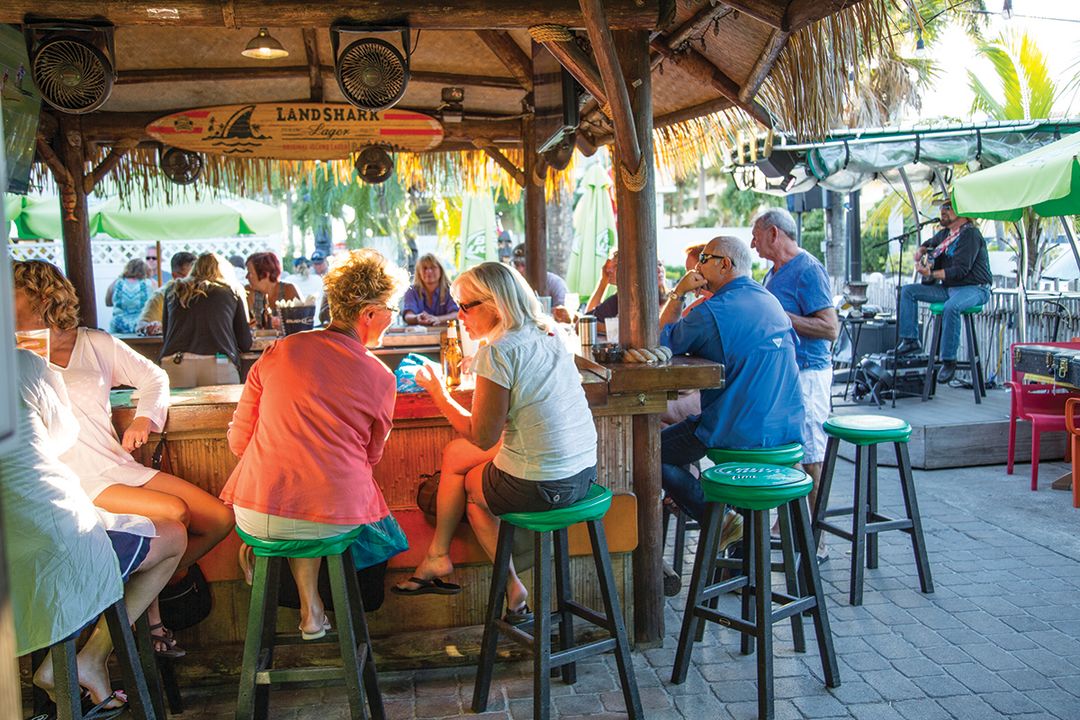
The island’s talcum-soft white sand, traditions like the weekly Sunday drum circle and the global exposure that came with the MTV reality show Siesta Key have created an insatiable demand for all things Siesta.
Image: Jenny Acheson
The Sarasota County Commission’s approval of several large hotels on the island is a major motivating factor for residents who want to break away. County commissioners reinterpreted a 1989 growth plan in a way that could pave the way for more than 500 hotel rooms on Siesta, which might choke an already bustling Siesta Village where both mainland residents and tourists abound. In response, some residents took legal action and sued the county, accusing the commission of violating its own comprehensive plan.
If Siesta does gain its independence, it will come with a healthy property tax dowry. Its home values and price tags keep breaking records. One home with architectural renderings at the ready is slated to hit the market for $32.5 million, which would make it the most expensive home in the county.
Wellen Park
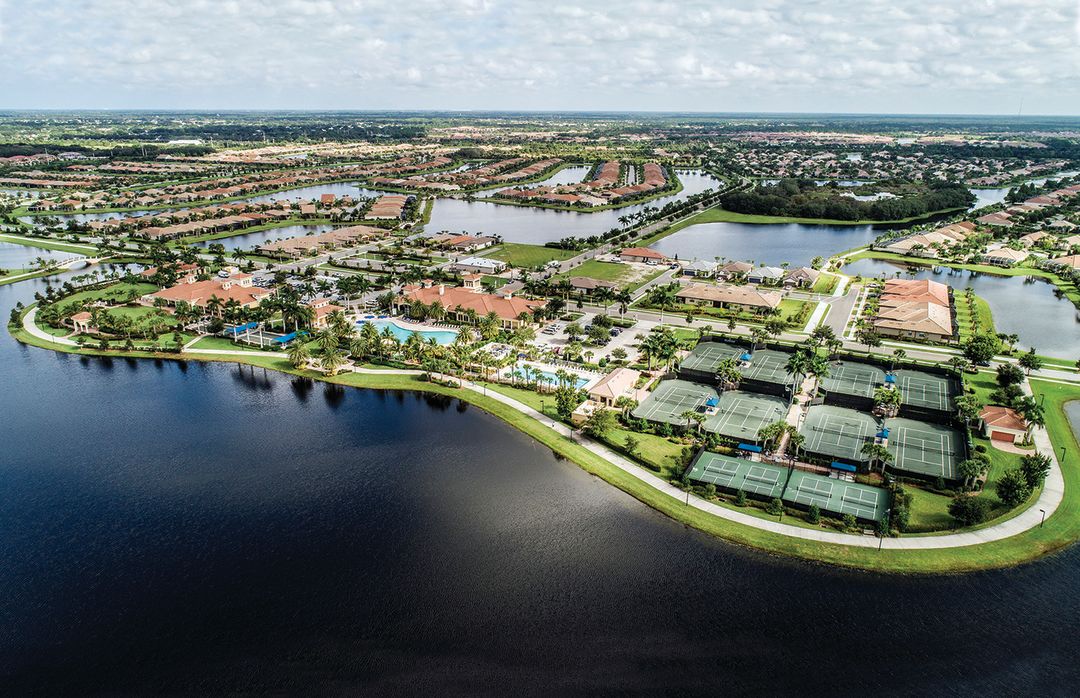
Island Walk is a gated community on 830 acres where homes are connected by canals, walking paths and bridges.
Image: Courtesy Photo
What was known as West Villages three years ago, located mostly in North Port and partly in Venice, is now part of Wellen Park, the new name of the master-planned community in south Sarasota County. Two more new districts there are Playmore, which encompasses CoolToday Park (the spring training home of the Atlanta Braves) and Downtown Wellen, an adjacent shopping and entertainment district.
Once completed, Wellen Park’s downtown will feature an 80-acre lake, retail shops, waterfront restaurant dining, pedestrian-friendly streets, a splash pad, a playground and a public town hall gathering place that will host live events. It will also have a hammock grove and a permanent area for food trucks.
The community now boasts 11 neighborhoods, with more new home construction on the way. Wellen Park covers 11,000 acres, including 7,000 acres of undeveloped land. At full buildout, the community will have 22,000 homes and more than 60,000 residents.
No longer as affordable as it once was (what is?), it’s priced competitively compared to that other master-planned community, Lakewood Ranch. You can still find a new, single-family home there for just under $400,000, and you can still get a condo there in the $200,000 range.
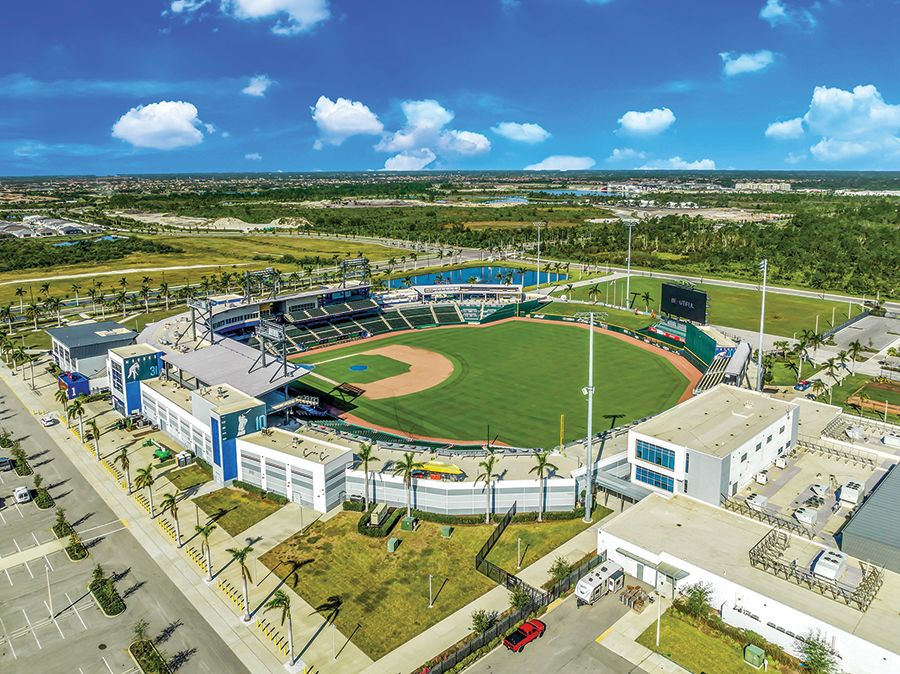
Wellen Park’s crown jewel is CoolToday Park, a hub for live entertainment and events that also serves as the spring training home of the Atlanta Braves.
Image: Everett Dennison
What makes Wellen Park similar to Lakewood Ranch is that it, too, has consistently been named among the top-selling master-planned communities in the nation. What sets it apart is its proximity to beaches and its highly-rated school district.
“Over the last 12 to18 months especially it’s emerging into an attractive new construction solution to affordable coastal living,” says Adam Hancock, owner and founder of The Sunshine State Company, a real estate brokerage. “It has great public schools, a walkable downtown and all within 15 to 25 minutes from three world-class beaches. The new construction paired with coastal living is rare in Florida. An average price in Wellen is almost the starting point of single-family homes in Lakewood Ranch. Those are reasons why it’s no longer an empty-nester destination. It’s attracting younger families now.”
Myakka
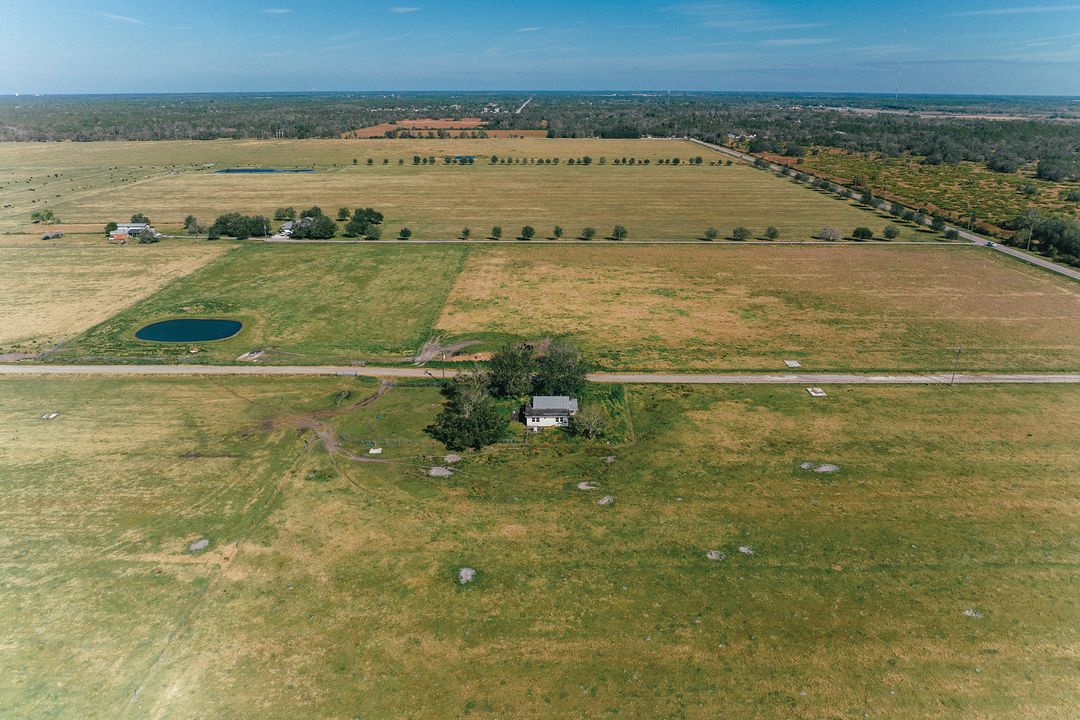
Myakka is known for its rustic, rural character, but demand for new housing in the area is high.
Image: Everett Dennison
Myakka is in southeastern Manatee County, inland from Lakewood Ranch, and is known for rural living, open land and farming. It’s also home to some unexpected wildlife beyond what you’d encounter at one of the many horse ranches there.
There’s a lemur conservation foundation, a sea lion preserve and an elephant ranch, all open to the public, which adds a quirky twist to the area. But Hurricane Ian disrupted otherwise quiet life here and brought massive flooding. Many residents suffered significant damage to their properties, lost cattle or crops, could not power their drinking water wells and were running low on supplies.
Dairy farms lost cows and Myakka River turned into a lake. Triangle Ranch, a 1,143-acre parcel of land that lies just to the north of Myakka River State Park, was flooded by the normally placid river. Waters from the Myakka River also flooded Hidden River, just to the south of Myakka in Sarasota County, and a levee there broke just days after Hurricane Ian made landfall, leading to a wave of water hitting a residential community. But the volunteer response was strong, and the area is bouncing back from the Category 4 storm. Still, it faces another type of threat.
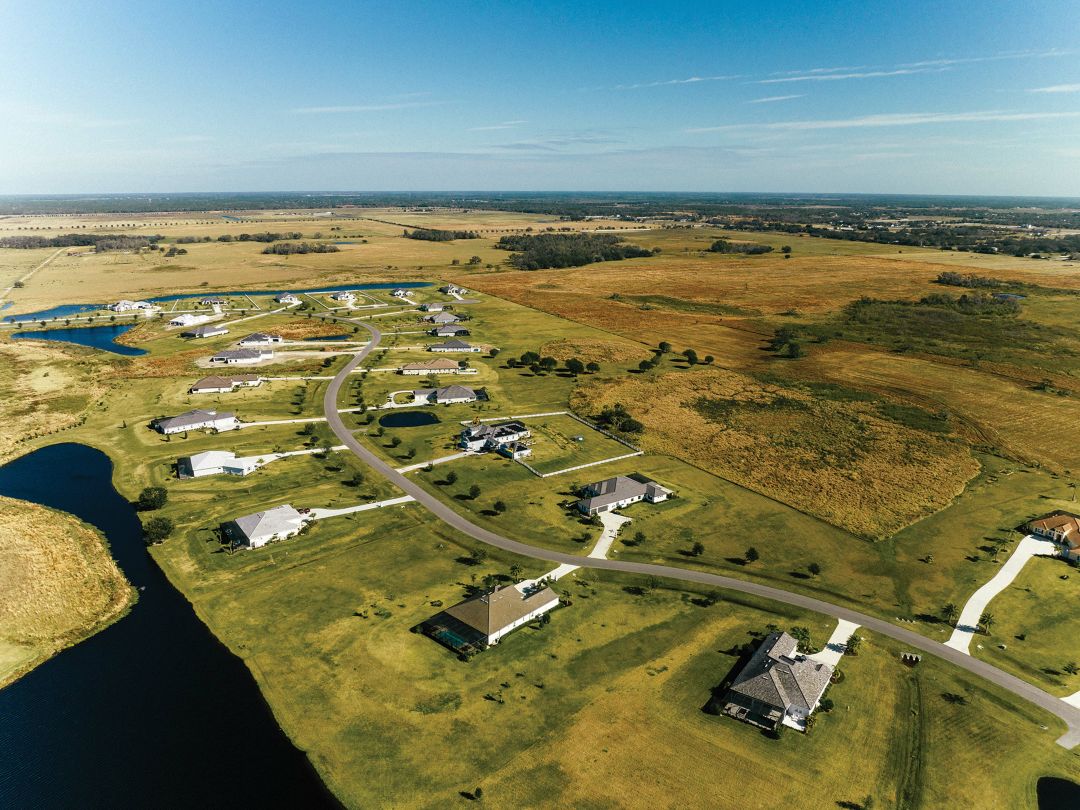
Residents and local environmental activists worry nearby Lakewood Ranch’s sprawl may creep into the largely agricultural community.
Image: Everett Dennison
Considered the “country,” residents and local environmental activists worry nearby Lakewood Ranch’s sprawl may creep into the largely agricultural community. Yet to be approved, a Myakka Village development is planned to include 430 acres of family residences and a golf course. And although not in Myakka City proper, Lakewood Ranch Southeast is slated to bring 5,000 homes across 4,100 acres, further encroaching on historically rural land. Community leaders are fighting back with a campaign to “Keep the Country Country,” but land-hungry developers and demand for suburban housing may eventually infringe on Myakka’s way of life.
Englewood
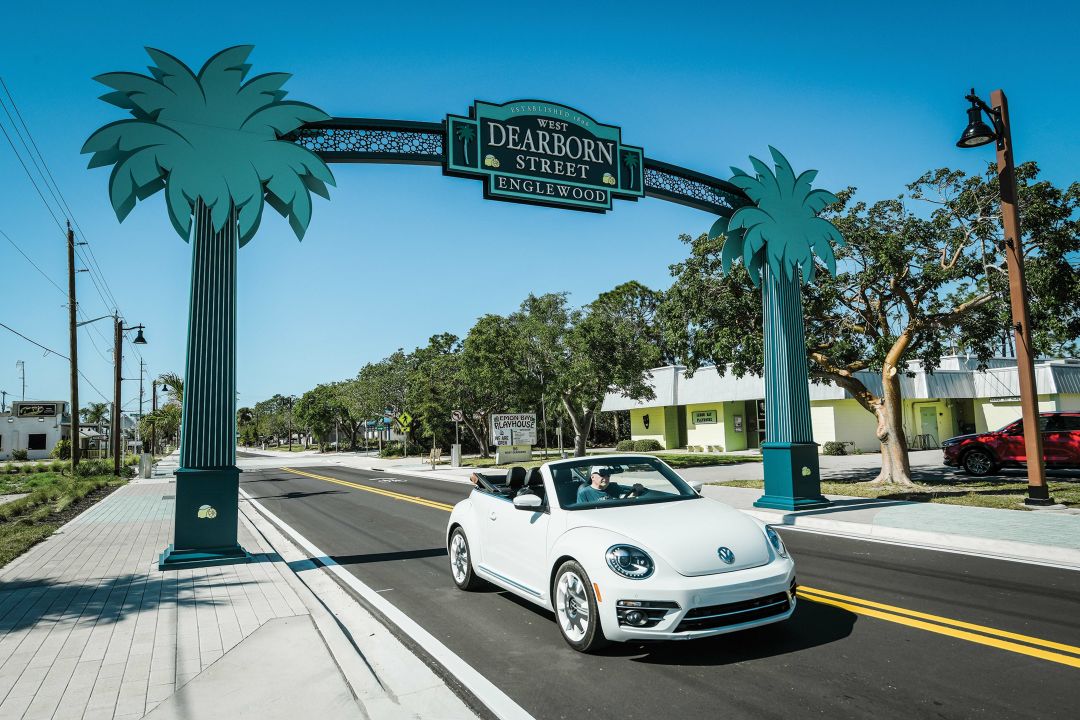
Englewood is known for its uncrowded beaches, vibrant arts scene and cozy charm, and new
improvements have breathed life into its downtown.
Image: Everett Dennison
Hurricane Ian blasted through this quiet, low-lying coastal beach town last September, leaving many mobile home parks destroyed and many single-family homes flooded. With many homes that wouldn’t qualify for homeowners insurance, much less flood insurance, some residents are at a standstill while they wait for help to rebuild.
“The months right after the storm were a blur, and for weeks volunteers brought relief supplies like gas, ice, propane, toiletries, food, and clothing,” says Kim Parks, membership coordinator at the Englewood Chamber of Commerce. “They went into mobile home parks where residents were shell-shocked. We’re past that now, but lots of people still need roofs. It just takes time with insurance and adjusters and finding contractors because everyone needs the same things.”
But there are bright spots. There was a recent ribbon-cutting event to celebrate the completion of the W. Dearborn Street Improvement Project, which broke ground in 2021. The renovation added parking, a gateway entry sign, shade structures and widening of sidewalks in this historical community known for its seasonal farmer's markets, craft shows, art galleries, restaurants and boutiques.
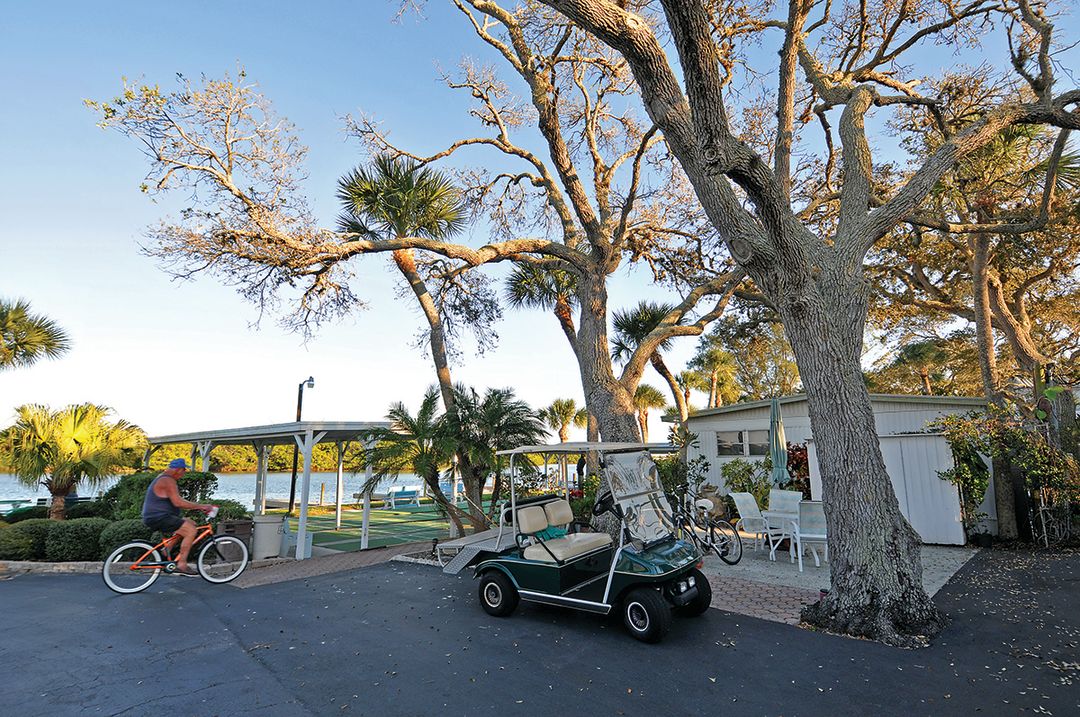
“It’s season now and busier than ever,” says Kim Parks, membership coordinator at the Englewood Chamber of Commerce. “Every day is getting a little better.”
Image: Everett Dennison
The Dignam Family Stage also opened, joining community spaces such as the Veterans Memorial and Freedom Pavilion and the Englewood Sculpture Garden.
In November, a vintage-style “Greetings From Englewood” postcard mural by Florida artist Matt McAllister was dedicated to the community and quickly became a hotspot backdrop for a selfie and the hashtag #EnglewoodStrong—an homage to the resilience of residents and volunteers who banded together following Ian.
“It’s season now and busier than ever,” says Parks. “Every day is getting a little better.”